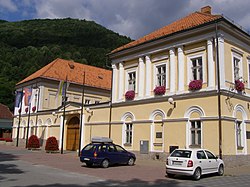
Banská Štiavnica is a town in central Slovakia, in the middle of an immense caldera created by the collapse of an ancient volcano. For its size, the caldera is known as the Štiavnica Mountains. Banská Štiavnica has a population of more than 10,000. It is a completely preserved medieval town. Because of their historical value, the town and its surroundings were proclaimed by the UNESCO to be a World Heritage Site on December 11, 1993.

Lučenec is a town in the Banská Bystrica Region of south-central Slovakia. Historically, it was part, and in the 18th century the capital, of Nógrád County of the Kingdom of Hungary. In 1920, as a result of the Treaty of Trianon, it became a part of Czechoslovakia. The town has a large synagogue, built in 1924, which served a large Jewish population before World War II. The synagogue underwent renovations in 2016.

Ilava is a town in the Trenčín Region, northwestern Slovakia.

Rimavská Sobota is a town in southern Slovakia, in the Banská Bystrica Region, on the Rimava river. It has approximately 24,000 inhabitants. The town is a historical capital of Gömör és Kishont County.

Rožňava is a town in Slovakia, approximately 71 kilometres by road from Košice in the Košice Region, and has a population of 19,182.

Dubnica nad Váhom is a town in the Ilava District, Trenčín Region in Slovakia.

Gelnica is a town in the Košice Region of Eastern Slovakia. It has a population of 6,076.

Skalica is the largest town in Skalica District in western Slovakia in the Záhorie region. Located near the Czech border, Skalica has a population of around 15,000.

Partizánske is a town in Trenčín Region, Slovakia.

Revúca is a town in Banská Bystrica Region, Slovakia. Revúca is the seat of Revúca District.
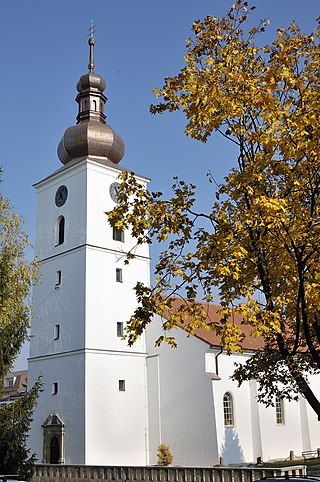
Senica is a town in Trnava Region, western Slovakia. It is located in the north-eastern part of the Záhorie lowland, close to the Little Carpathians.
Myjava is a town in Trenčín Region, Slovakia.

Veľký Krtíš is a town in middle Slovakia, situated in the historical Novohrad region. The town's most important economic sectors are mining and agriculture.
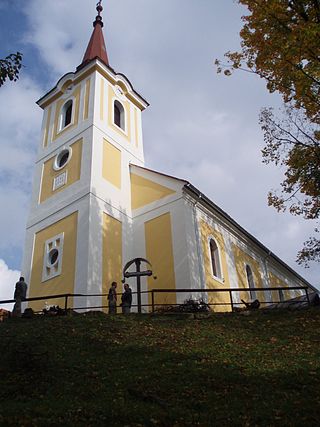
Pohorelá is a village and municipality in the Brezno District, of the Banská Bystrica Region of central Slovakia. It is located in the foothills of the Low Tatras range of the Carpathian Mountains, on the right bank of the upper Hron River. The village is located 33 km east of Brezno, 49 km southwest of Poprad, and 37 km north of Tisovec on First Class Road 66. Pohorelá is the third largest village of the Horehronie region. The Roman Catholic Pohorela church, built in 1762, is a dominant feature of the village. The village was known as Garamkohó for a time in the early 20th century.

Muránska Lehota is a village and municipality in Revúca District in the Banská Bystrica Region of Slovakia, located in the southern part of the Slovak Ore Mountains. There are two fishing ponds located on the territory of the village known as the "Upper Pond" and the "Lower Pond".

Muráň is a village and municipality in Revúca District in the Banská Bystrica Region of Slovakia.
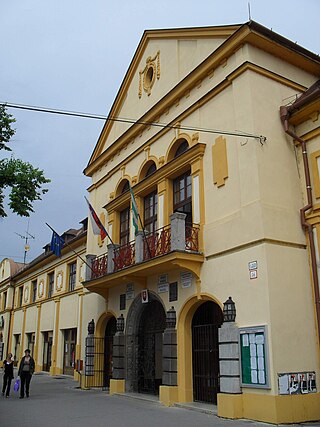
Tornaľa is a town and municipality in Revúca District in the Banská Bystrica Region of Slovakia, with a population of approximately 7,000.

Modrý Kameň is a town and municipality in the Veľký Krtíš District of the Banská Bystrica Region of southern Slovakia.

Handlová is a town in the Prievidza District, Trenčín Region in the middle of Slovakia. It is made up of the three parts Handlová, Nová Lehota and Morovno.
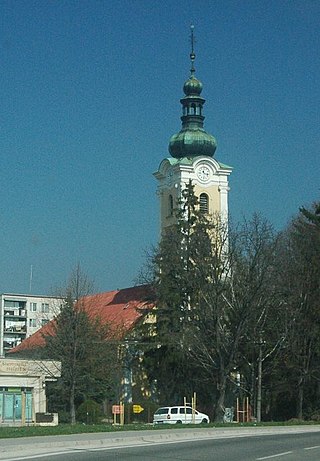
Stará Turá is a town in the Trenčín Region in western Slovakia.
